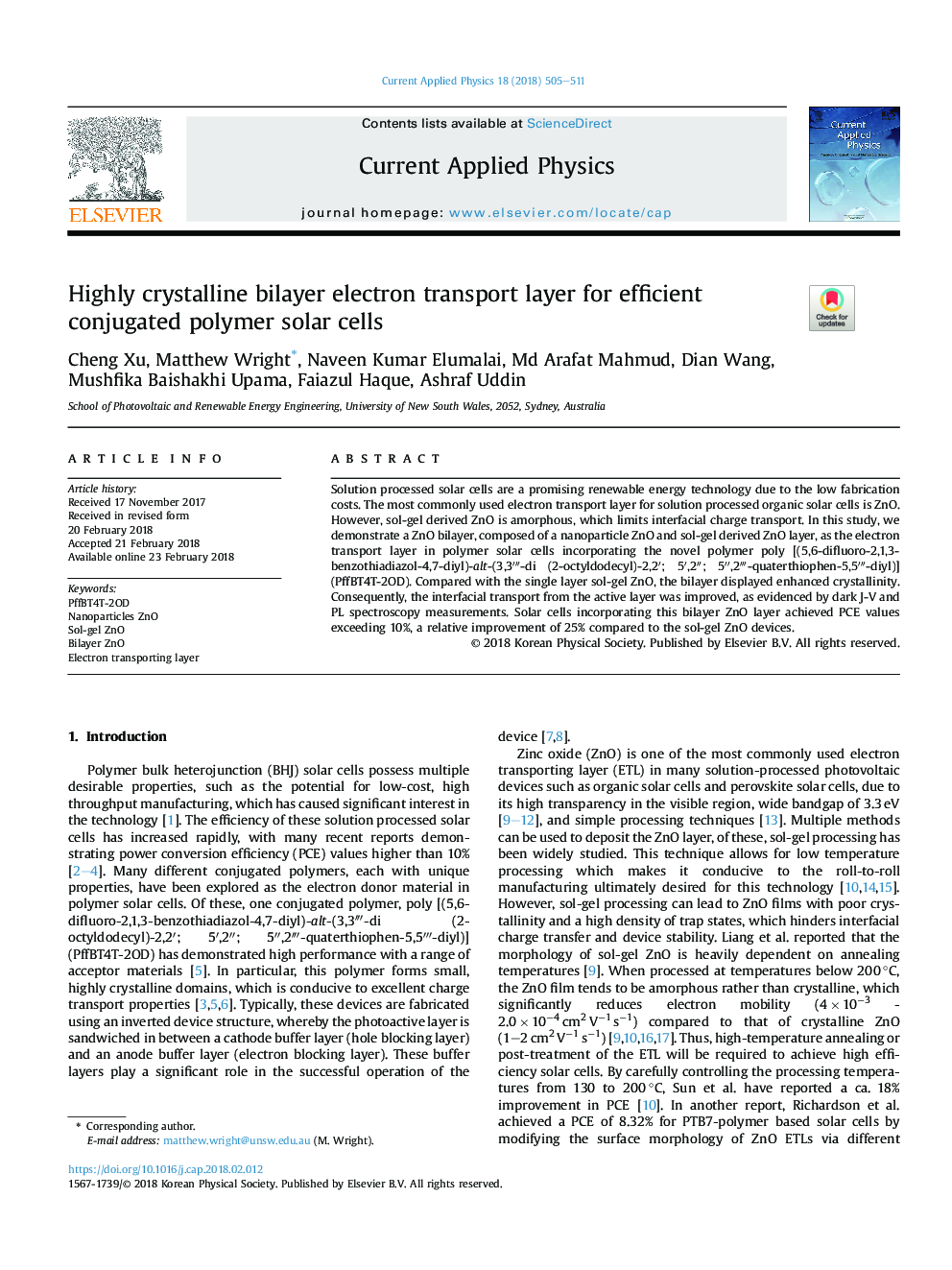| Article ID | Journal | Published Year | Pages | File Type |
|---|---|---|---|---|
| 8147779 | Current Applied Physics | 2018 | 7 Pages |
Abstract
Solution processed solar cells are a promising renewable energy technology due to the low fabrication costs. The most commonly used electron transport layer for solution processed organic solar cells is ZnO. However, sol-gel derived ZnO is amorphous, which limits interfacial charge transport. In this study, we demonstrate a ZnO bilayer, composed of a nanoparticle ZnO and sol-gel derived ZnO layer, as the electron transport layer in polymer solar cells incorporating the novel polymer poly [(5,6-difluoro-2,1,3-benzothiadiazol-4,7-diyl)-alt-(3,3â´-di (2-octyldodecyl)-2,2â²; 5â²,2â³; 5â³,2â´-quaterthiophen-5,5â´-diyl)] (PffBT4T-2OD). Compared with the single layer sol-gel ZnO, the bilayer displayed enhanced crystallinity. Consequently, the interfacial transport from the active layer was improved, as evidenced by dark J-V and PL spectroscopy measurements. Solar cells incorporating this bilayer ZnO layer achieved PCE values exceeding 10%, a relative improvement of 25% compared to the sol-gel ZnO devices.
Keywords
Related Topics
Physical Sciences and Engineering
Physics and Astronomy
Condensed Matter Physics
Authors
Cheng Xu, Matthew Wright, Naveen Kumar Elumalai, Md Arafat Mahmud, Dian Wang, Mushfika Baishakhi Upama, Faiazul Haque, Ashraf Uddin,
